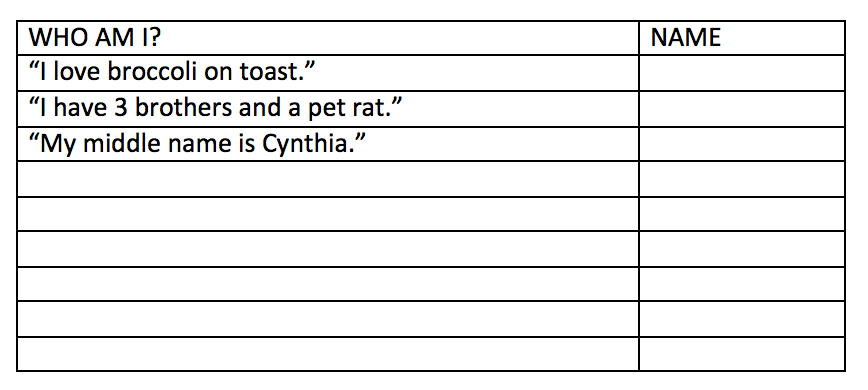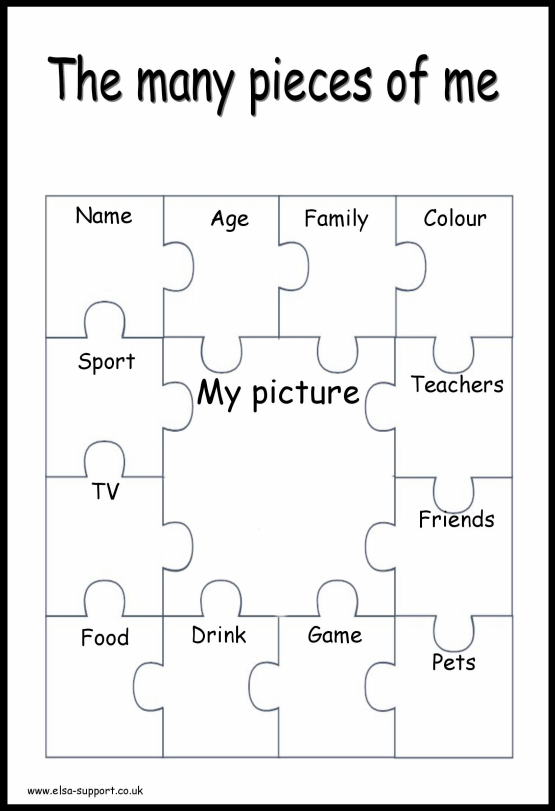Create a ‘Time Capsule’
Tell the children this year is going to be an amazing journey. They will all do and achieve some incredible things – most of which neither you, nor they know about yet! Show them a container that will be used as the capsule and explain what sort of things will go in it. You might include:
- Photographs – either individual or group
- A piece of writing to include what they are looking forward to and what they hope to achieve this year
- Maybe a piece of bread, or similar, wrapped in foil – just to see what happens to it in 10 months!
- Self portraits
- A newspaper article from that day or week
- Suggestions from the children
The exciting part will be to decide where to put it! If possible, it would be great fun to dig a hole for it. If so, you might discuss which containers are suitable to leave underground. A large well-sealed plastic Tupperware-type one is probably a safe bet. Make sure the spot is safe and secluded enough not to be disturbed.
Explain that you will return at the end of the school year to dig it up and perhaps set a date. What a lovely way to look back over the year and see how much has changed!
Share a book
One that meant something to you, perhaps as a child. If possible, show the book and make it seem really special; reveal it from a bag or under a cloth. Explain why this book is great and if possible read some or all of it. I used an old and very silly book called ‘Pigwig’ by John Dyke (from the 70s) about a pig who made ever more ridiculous hats to try and impress his love, Matilda. I told the children that if they didn’t like the book, I’m afraid they couldn’t be in my class!
Link a fun activity to the book of your choice. I got the class to design and label the most outrageous hat they could imagine!
Get the children to think of a book special to them – tell them it doesn’t matter how young or silly it seems. If possible, and they still own it, ask them to bring the book to show the class and explain why it is important or why they liked it so much. (You might photocopy the front covers of each and ask children to write a short explanation to go with them for an interesting book-corner display.)
Dress a figure
Give the class a large-ish cut out of a person made from thin card. All the templates should be the same size and shape. Provide scraps of material, wool, paper, sequins, pens, pencils, paint, scissors, glue and brushes. Tell the children the figure is them and they may decorate it however they like. If possible, take photographs of their faces and add them to the figures. They will make a lovely colourful display perhaps for a cloakroom area or similar.
Marble Drop
There’s nothing like a problem solving challenge to encourage team-building and getting to know one-another!
Provide each small group with the same resources: 1 marble, a cereal box, 5 straws, 3 pieces of A4 paper, scissors and a role of sticky tape.
The groups must create a maze in which to drop their marble from a minimum of 30 centimetres. The group whose marble takes the longest to fall is the winner.
We are all unique!
Ask the children to write 2 or 3 unusual facts about themselves in secret. Give some examples about yourself to help, such as:
“My first pet was a hamster called Sweetie”.
“I don’t like melon or beetroot.”
Choose 1 from each child and add them to a sheet.
Come back together to talk about how many they found and fill in any gaps.
Give the children a set amount of time to walk around, talk to each other, find out who the facts belong to and write their names opposite.
Interviews
Give each child a number, picture or playing card. Tell them not to show it to anyone yet. On a signal, the children must find a partner with exactly the same number, picture etc. and sit down with them.
Each child must then interview their partner. Depending on the ages of the children, you might set the questions and display as a reminder, or limit them to 3 each. Examples could include: “What’s the best thing you did in the holidays?” “What’s your favourite part of school?”
Again, depending on age, they might be allowed to make notes. (I preferred it as a speaking, listening and memory challenge. It is so interesting to see who really listens and takes in what their partner tells them.)
After a set amount of time, come back together. Each child reports back on what their partner has said. This activity is especially good for children who are not keen to talk about themselves. Younger children might enjoy holding a microphone, like a ‘proper’ reporter!
Naming Bingo
Give each child a blank bingo grid. Ask them to walk around and fill each square with the name of someone in the class – first and surname.
Once they are all filled in, play a game of bingo, pulling children’s names out of a bag.
The 4 corners game
This game is great fun to play inside or out (with enough space). Younger children love it and will want to play again and again. Label each of 4 corners (or sides if easier) with something appropriate – it might be as simple as different colours or ‘North, South, East and West’ etc. Another adult (or a child) is the ‘caller’ and closes their eyes. On a signal, such as a whistle, the children each choose a corner and run to it. The caller choses one of the 4 labels and shouts it out, e.g. “West!” Any children in that corner are ‘out’. When 4 children or fewer are left, they must each go to a different corner. The last child still in is the winner.
Co-operative art
Split the class into groups of 4. Give each group a large circle outline. Tell them they must split up the circle using different pencil lines. Once they are happy, they should paint each section they have created in different colours. (You may wish to limit the colours to 3 and say that none of the same colours may be touching. Or each group might have just one colour, with white, and create different shades.)
Once they have finished painting, they might mark the pencil lines with black paint or black felt-tip pens.
The next task is to agree on a suitable name for their painting and be able to give a reason for it.
Lastly, the children should describe their painting to the class and explain what they felt/enjoyed about making it.
All About Me
There are some great sheets already created for children to fill in with lots of details about themselves. Here is one free example by Elsa-support.co.uk taken from many available on Pinterest.
When they are finished, get children to show each other what they have written and maybe share one fact each with the whole class. They could be made into a book and added to your reading area.
With thanks to Beverley Smalley for writing this blog. Beverley is an education specialist, writer and former primary school teacher.







